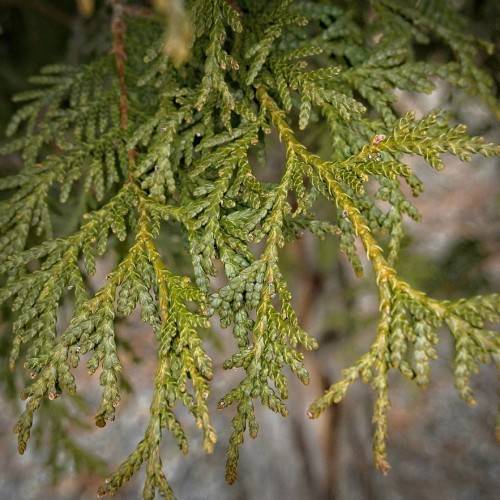
western red cedar
Thuja plicata
Cycle:
Perennial
Watering:
Average
Hardiness Zone:
5 - 7
Flowers:
Flowers
Sun:
Full sun Partial sun Shade
Soil:
Loamy Clay Humus Rocky
Cones:
Yes
Leaf:
Yes
Growth Rate:
Moderate
Maintenance:
Moderate
Salt Tolerant:
Yes
Invasive:
Yes
Care Level:
Low
watering
Western red cedar (Thuja plicata) should be watered thoroughly when the soil feels dry to the touch. It is best to do a deep watering so the water can reach the lower roots. This species generally does not need to be watered too regularly, once every 7-10 days should be sufficient in well draining soil. When growing in containers, you may need to water them more often, approximately every 2-4 days. During hot, dry weather, you may need to water them every other day. Additionally, you can look for clues in the foliage such as wilting, drooping, or discoloration, which could indicate the need for more water.
sunlight
Western red cedar (Thuja plicata) typically needs full sun to partial shade in order to thrive. Full sun means 6 to 8 hours of direct sunlight each day. The amount of shade the tree needs can vary depending on the season and climate, and can be anything from a few hours of partial shade to full shade. In areas with hot summers, western red cedar may benefit from some afternoon shade.
pruning
Western red cedars should be pruned in late winter, when the branches are still dormant and the weather is cool. This will help minimize stress on the tree and reduce the chance of disease. Start by removing any dead, damaged, or diseased branches from the tree. The remaining branches should then be thinned, reducing their height by 1-third and removing any competing branches that are competing for sunlight and nutrients. In addition, it may be necessary to shape the tree by removing branches that are growing out at odd angles, sacrificing some of the visual appeal of the tree for a more natural look.
